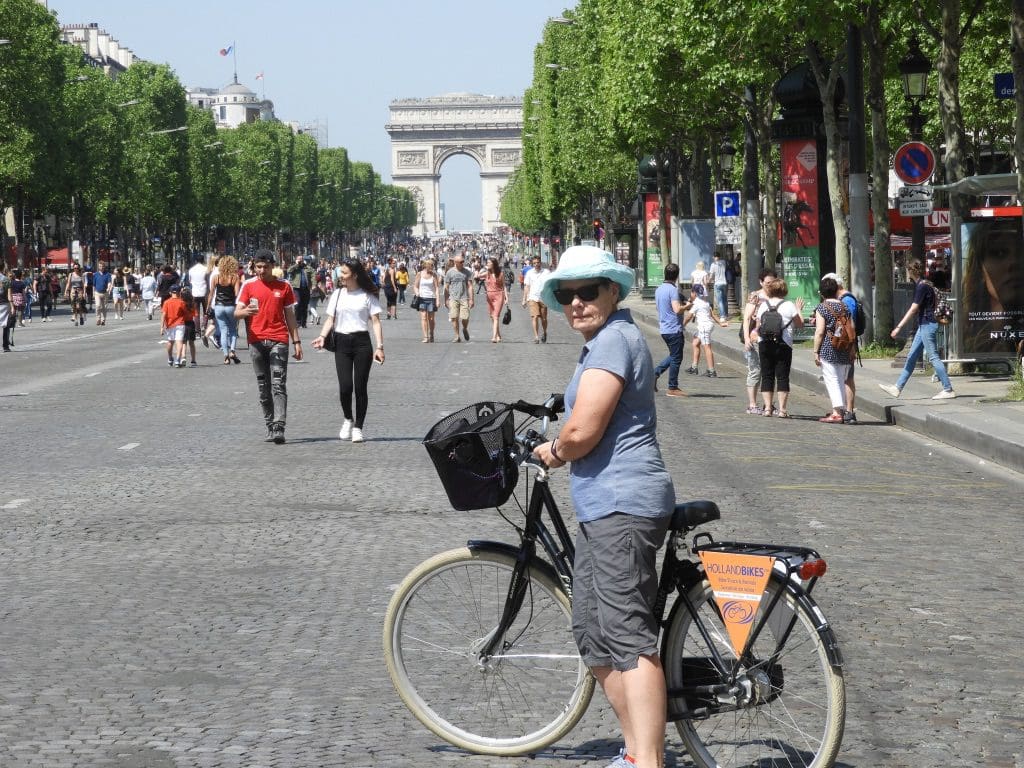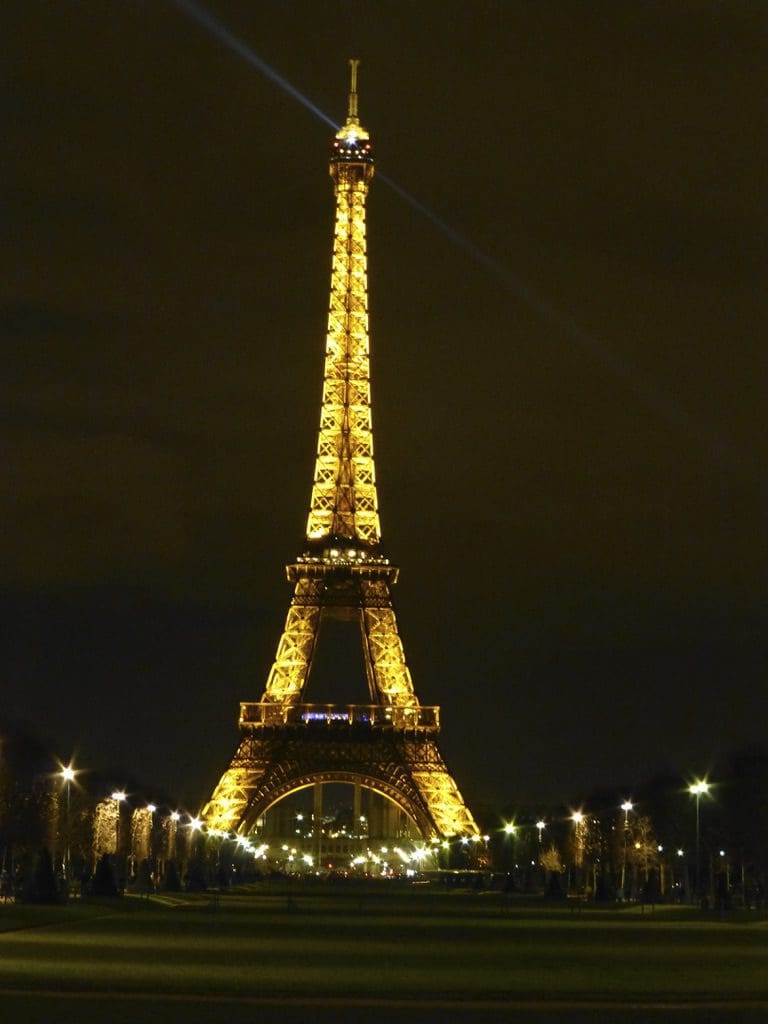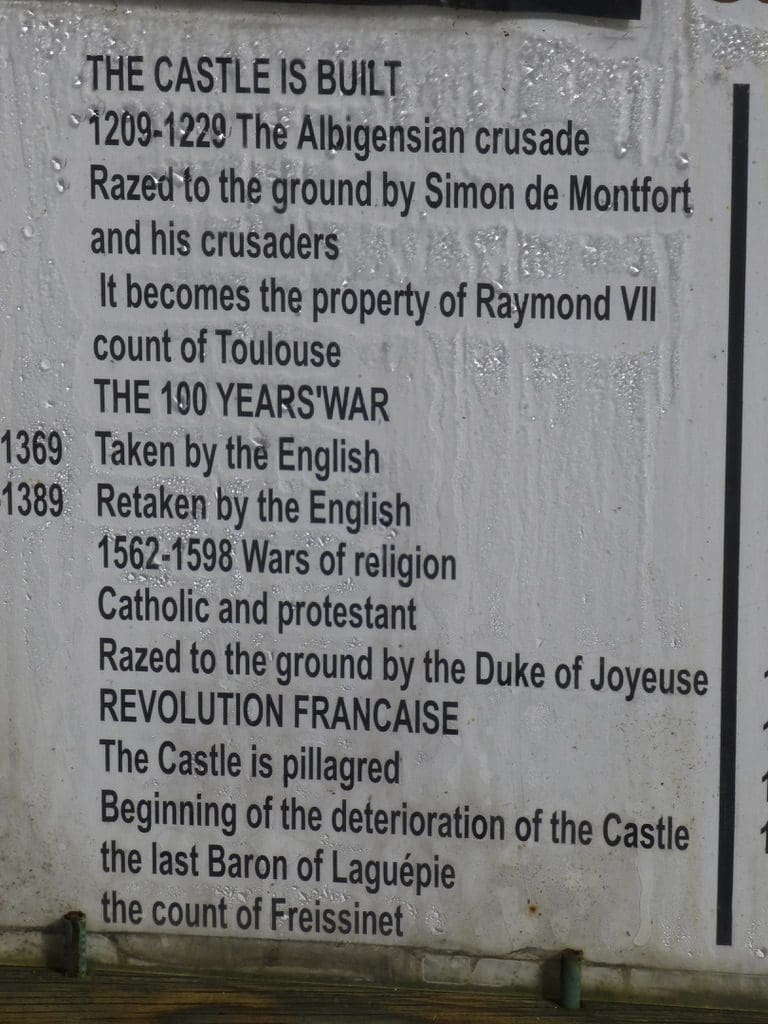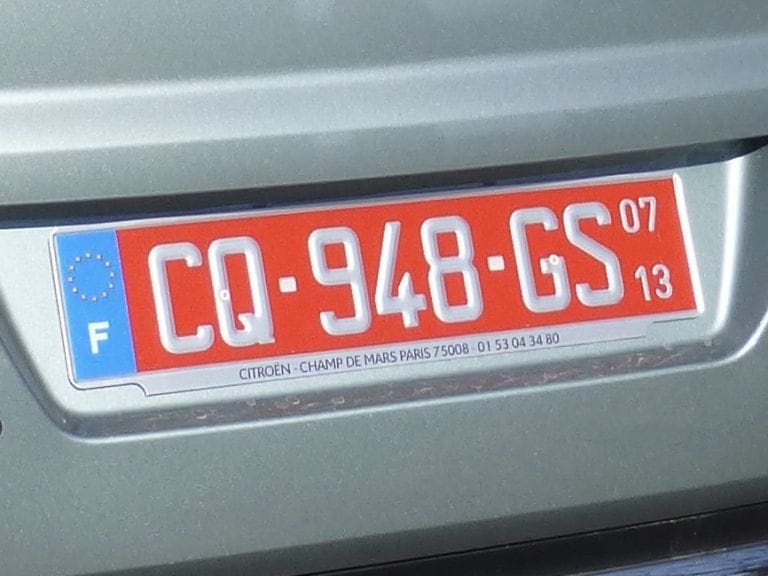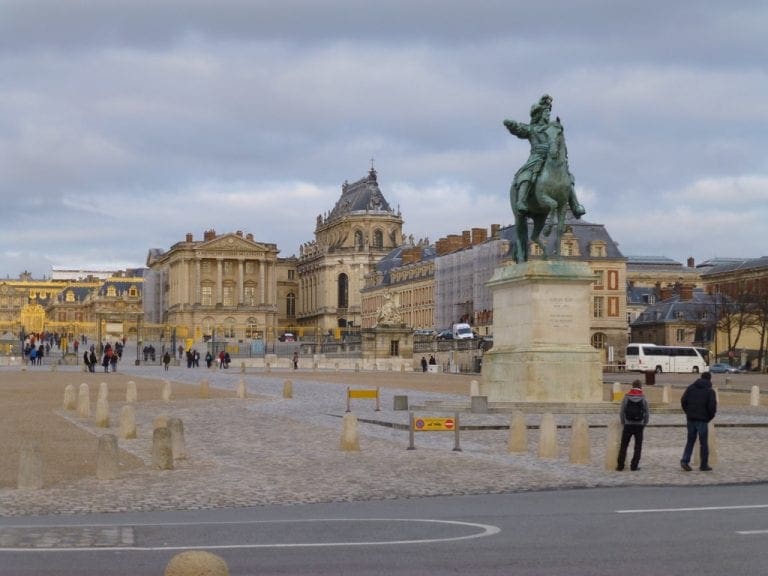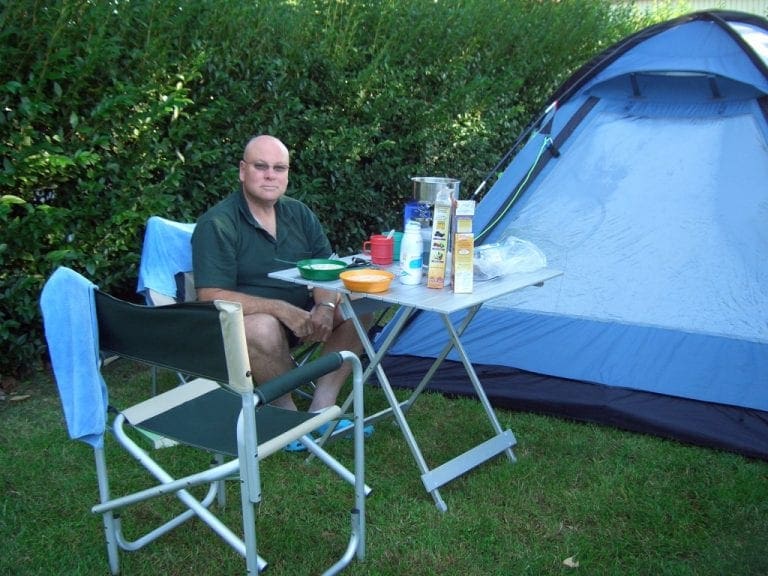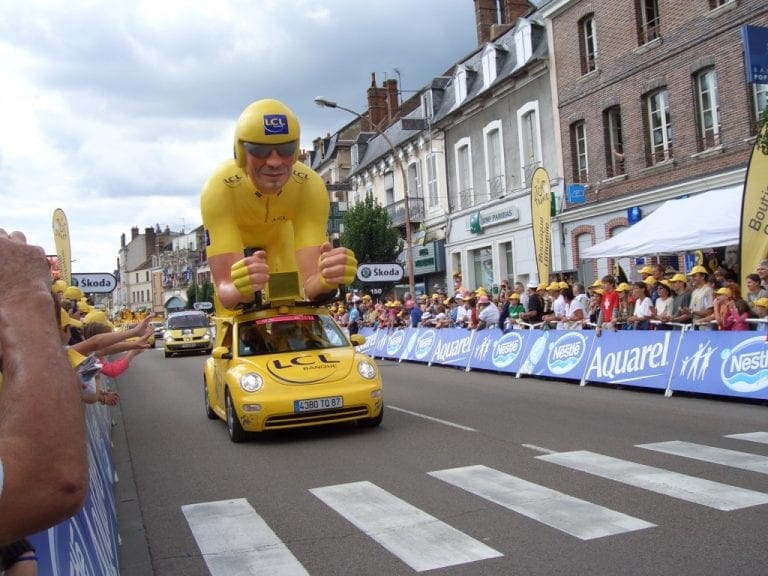Europe Trip 2018 – week 1 – Paris
Riding up Champs-Elysees
We are embarking on an eight week road trip beginning in Paris, London and then by road throughout much of the big island of Britain. Preparation. This will be our most complicated road trip yet. I think that we have 22 places of accommodation booked. Just getting that together and keeping it organised has been a major effort, and quite a break from our recent trips where we had a week in each of 12 villages. Easy to make a mistake. I hope it all runs smoothly from one to the other and we can find them all and their keys. Ho Ho. We will have a car for the ‘road trip’ part. I think that we will drive about 4,000km in the 41 days that we have the car. Our initial thinking was along two interrelated lines – we wanted to see where our ancestors came from in Britain and the kind of places that they had escaped from. To this end we are visiting many ‘industrial revolution’ sites. The number of those has been rapidly diminishing as we are already becoming bored with them. An awful lot of reading so far. We also want to go back to Paris and London. We have not been back to London since 1975. I wonder if it has changed?
29 April 2018. Flights from Wagga to Sydney, (a long wait in Sydney) Sydney to Hong Kong (Cathay Pacific – 7 hours – excellent), Hong Kong to Paris (Cathay Pacific – 13 hours – crowded – OK). A very long day(s). Helen was really knocked around by the flights and was especially knocked around when her bag did not appear on the carousel. We were reporting it missing when I went back for a final look and it had just come off. Ah well! I found the flights ok and I think it might have been my new Bose Quiet Comfort noise reducing headset. Absolutely wonderful. I am often disappointed with new technology but certainly not these wonderful things. RER from Charles de Gaul airport into Paris after a longish walk around the terminal and topping up our Navigo metro passes. We have a wonderful apartment just off Rue de la Harpe on the left bank just over the Seine from the Notre Dame. I would come back to this apartment any time. We arrived at the apartment at 6:30 pm and crashed.
This is a very relaxed time in Paris. For those wanting a walk through museums, I’ll refer you to previous trips. 2016. 2013 week1. 2013 week2. Plus a bunch of blogs written in 2013.
I’ve built a slideshow for this week. You can find it here.
1 May 2018. Day 1. Up at 7am and a quick walk to the bread shop for 2 baguettes. After breakfast, we had a leisurely stroll along the Seine and through back streets and alleys to the Deux Magots for a coffee and chocolate. Then a stroll back to have lunch at La Petite Hostellerie in Rue de La Harpe (recommended by a member of the Grange – excellent). Our apartment almost shares a wall with the Hostellerie. A real delight to be back in Paris.
Helen: My fitbit is celebrating that I have done my 10,000 steps for the day. That means the above stroll was probably 6/7 km long. Today, being the 1st May, there is a custom in France to give a sprig of Lily of the Valley to your friends and lovers. They are being sold on all street corners. Coffee is usually served with a glass of water. At the Deux Magots many tables had posies of Lilly of the Valley in the water glasses, being kept fresh, while the owner sat in the sun ‘reading’ their phone.
Sight of the day – a silkie terrier being taken for a walk on lead. The dog had found an interesting smell to investigate so put the brakes on all four paws. The owner continued on her way. Dog meanwhile was sliding along the cobble stones, legs rigid and head craned backwards. The Parisians have an interesting relationship with their dogs.
As I lie on the bed, replete from lunch (a plate of charcuterie, followed by lamb and an eggplant veg, then cheese – along with a pitcher of Sancerre), I have time to give the ceiling a closer look. A massive oak beam (about 15 x 20 inches) is the main support. It has been there for more than two hundred years. The other lesser beams (about 6 x 4 inches) run the length of the room. Some are original – rounded edges and curved, indicating the original shape of the branch of the tree. The square sawn ones have been replaced in more recent times. History is constantly in view in this city.
In the evening, we went to a concert in a local church – L’Eglise Saint-Julien-Le-Pauvre for an accordion/piano concert titled ‘from Chopin to Tango’. We managed to get front row seats for an excellent short (just over 1 hour) entertaining concert. Walked back to the apartment via Notre Dame and a couple of crossings of the Seine and back through the ‘street of the cat who fished’ – the shortest, narrowest alley in the world with no doors and just one very small window. Streets very crowded.
 |
| Saint Severin |
2 May 2018. Day 2. Every morning I walk down to the local boulangerie to buy our breakfast baguettes. From our apartment, our closest boulangerie is no more than 200m (often along alley ways without cars). Along that path, I pass two old churches (Severin and Saint-Julien-Le-Pauvre) and just across the creek from a big mother church (Notre Dame). There is certainly something about Paris that keeps drawing us back. I could live here. I like it a lot. The alleyway that our apartment is on runs parallel to and about 140m from the Seine. Just before the Seine is another alleyway – Rue de la Huchette – about which the book ‘The Last Time I Saw Paris’ was written. Helen is on her second reading of that book.
Today, we took the metro to Les Gobelins – the area once famous for its tapestry. Unfortunately, for us the tapestry manufactory was closed. I find it difficult to get used to the idea that museums open after 11am. Why not earlier? We walked back along the eating street of Rue Mouffetard, along Descartes and Clovis to the Pantheon (where we sat with the uni students having lunch in the sun), down Venete and back home. Along the way, we sunned ourselves at a coffee shop and at a fountain – very pleasant. We returned to Bistro Le Descartes where we had eaten last trip. This time it was disappointing and not recommended. Helen found a couple of houses whose plaques say that ‘Hemingway lived here’.
 |
| Cathy & Henri |
3 May 2018. Day 3. Today was our trip out to the Saint Denis Basilica Cathedral where 42 kings, 32 queens and 63 princes and princesses of France are buried. Quite an imposing place. Some very famous names – Francois I, Henry II and Catherine de Medici. I’m a bit of a fan of all three of these – especially Cathy (who gave us the table fork). Louis XVI and Marie-Antoinette are also here after being moved from La Madeleine. This was a trip into another part of Paris, this time just outside the Peripherique. Each of the districts of Paris is different from the others. Where we are staying now in the 5th is full of narrow twisting cobbled alleyways. Yesterday at Les Gobelins is wide straight boulevards (a word that meant ‘rampart’ made of rocks but now means ‘a tree-lined street’).
4 May 2018. Day 4. Today was our 9 1/2 hour Guided Tour with Paris City Vision to Vaux-Le-Vicomte and Fontainebleau. Excellent. Vaux was the residence of Nicolas Fouquet who on 17 Aug 1661 hosted a lavish fete for the young Louis XIV who in a fit of jealously had Fouquet arrested by d’Artagnan and thrown in gaol for the term of his natural life. Vaux was lavish and became the model on which Versailles was later built. Fontainebleau is huge. It was frequently used as a favourite residence by all kings of France from 1137 to Napoleon III. 1,600 rooms. Francois I, Henri II, Henri IV and Napoleon I all left their signatures by adding and changing architecture. A big day for us. I’m glad that we saw the smaller Vaux first before the hugeness of Fontainebleau. Certainly chateaued out by the end of it. Our guide was excellent. Highly recommended. I’ve built a small slideshow of the day at Vaux-Le-Vicomte and Fontainebleau.
 |
| Petanque – Luxembourg Team of 4. The two in dark colours are ‘rollers up’. The two in light colours are ‘bombers’ |
5 May 2018. Day 5. Saturday in Paris. We slept in and lounged around in the morning. Lunch at La Petite Hostellerie again. Then, a walk to and through the Luxembourg Gardens – along with a big chunk of Parisians. One of the first sunny Saturdays for a while and the park was full. Tennis, several vicious games of petanque, pony rides for kids, chess, small model sailing boats, concerts and picnics on every available patch of grass. Thousands chatting.
In the evening, we went to another concert in our local church (Saint-Julien-Le-Pauvre). This time cello accompanied by piano (same pianist as 1 May), again excellent. It is part of the www.concertinparis.com series with a concert on most evenings during summer.
After meeting with another Francophile yesterday, I’ve been thinking of the books that have informed my knowledge of France. I have to admit that I get most of my history from fiction. Here is a list:
- Dumas – the 6 Musketeers and d’Artagnan stories have informed much of my knowledge on 17C France (as he did for most French)
- Dorothy Dunnet’s two series – Nicholas and Lymond – France 15C & 16C.
- Antonia Fraser – Marie Antoinette – a sympathetic story of this unfortunate victim of fake news
- Mantel – A Place of Greater Safety – a different view of the revolution of 1789.
- Mark Twain – ‘Personal Recollections of Joan of Arc’
- Simon Scarrow – 4 books about the rise and careers of Wellington and Napoleon
- Michel Thomas – The Test of Courage – France during WWII – non-fiction
- Hugo – Les Miserables – a good book on upheaval in 19C France (nothing like the opera)
- Anne Kalogridis – Devil’s Queen – a sympathetic view of Catherine de Medici
- Jean Plaidy – Madam Serpent – ditto
- Zola – The Ladies Paradise (part of The Downfall)
- Joan DeJean – How Paris Became Paris – The Invention of the City – non-fiction
- Robert Harris – An Officer and a Spy – the Dreyfus affair
- Colleen McCullough – Roman series – especially ‘Caesar’ for Caesar’s wars with Gauls.
 |
| Champs-Elysees up to and around the Arc de Triomphe |
6 May 2018. Day 6. A sunny warm day in Paris – shorts. This was a planned day. We had hired bikes from Holland Bikes (exit 8 at the Etoile). The plan (which we exceeded) was to ride round the Etolie, down and up the Champs-Elysees and round the Concorde. Because this is the first Sunday of the month and hence a ‘Paris breathes’ day, the Champs is closed to traffic. As it turned out, we were a little early for the road closure (which these days involves concrete barriers), so we rode down it anyway – keeping out from under the wheels of tour buses. Then across to the left bank and along down the Seine dodging runners, dogs on strings and pram pushers, crossed back to the right bank and
rode past the two islands to near the Bastille. Then back. We tried the left bank but it was all cobble stones and steps and was eventually closed at about the Louvre. So we went back to a ramp and crossed back to the right bank. Then, around the Tuileries, around Concorde, up Champs, around Etoile (giving way to traffic coming into the round about – hoping traffic leaving knew not to hit bikes) and back to Ave de Foch to return the bikes. We rode about 17km. A big day. Some on hallowed ground.
 |
| Track for our bike ride from Etoile along the Seine (Unfortunately, I forgot to turn the tracker on until we were at the Louvre) |
7 May 2018. Day 7. My usual boulangerie was shut. Quelle horreur. Today, we went for a self-guided tour that Helen found online around Place de Italy. Some very good street art and finished off with a good (though obscure) restaurant – Chez Gladines.
8 May 2018. Day 8. Tuesday. This is the last day of the French long weekend. After a lunch at a Galette restaurant (Breton), we joined the flock of Parisians in the Garden of Plants – the large botanical gardens and menagerie adjacent to the Natural History Museum. The decision to do both those things was in a small way prompted by our book club back in Wagga having to read this month ‘All the Light We Cannot See’ which is partly set in the Natural Museum and in Brittany. (My review of that excellent book is here.) The Garden of Plants was full of Parisians strolling and clambering over each other to take photos of plants in the menagerie! A plaque on the wall as were leaving reminded us that ‘radioactivity was discovered here by Henri Becqueruel’. Marie Curie (the only woman to receive two Nobel Prizes) worked in an adjacent building.
9 May 2018. Day 9. Manufacture of Les Gobelins – one of our planned activities. We actually bought tickets for the 90 mins tour – in French. We were taken into two huge rooms with enormous windows where people were working at looms (no photos). In the first room, people were working in a ‘carpet technique’ where the weft is pulled through about a cm and cut off to make a raised mat. In the second room, people were working in a technique where the weft is woven flat onto the warp. This is the technique that we would normally see in tapestry. The photo to the left has that technique.
We have enjoyed our stay in Paris – again. I really do like this part of Paris with it narrow, winding, cobbled streets. I would certainly come back to this apartment with its ‘kitchen in a cupboard’ and old ceiling beams. We are about 10 metres off the very busy Rue de la Harpe and just south of the two very busy lane-ways Rue de Severin and Rue de la Huchette. All three of those have their street level frontages taken up with cheap eats – Fondue and Creperies – and are packed with crowds from 9am to after 10pm. The upper floors of those streets continue to tick along as they have done for a century. The world of ‘The Last Time I Saw Paris’ (written 1920s and 30s) is gone from Huchette which is now grafting money from passing tourists.
